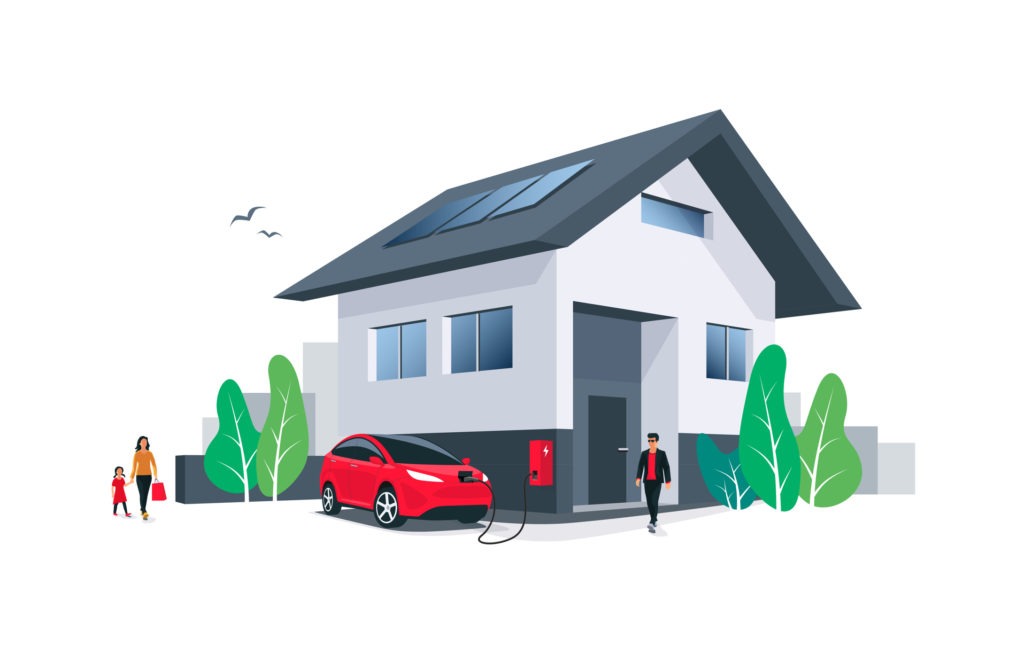What does it take to insure a battery-electric vehicle?
25 August 2022

New-car registrations feature an increasing share of electric vehicles (EVs). But what does it take to insure a battery-electric vehicle (BEV)? Autovista24 deputy editor Tom Geggus finds out.
In the first half of this year electrified vehicles claimed a market share in Europe of 43.6%, a significant increase from 9.6% in 2019. More specifically, BEVs claimed 11.6% of new-car registrations between January and June 2022. This electrification is driving changes for shareholders across the automotive sector, from carmakers to consumers, and coverage providers.
Plugged-in policy
BEVs require a fresh approach from insurance providers. Copy and pasting internal-combustion engine (ICE) policies could lead to inadequate cover. Enter purpose-built policies, such as LV=’s electric-car insurance which was launched in 2019 in the UK.
Standard coverage includes empty battery breakdowns in the UK, over-the-air (OTA) updates, accidental damage, fire or theft to the battery, charging cables, wall boxes, and adapters. This is particularly important as while the price of precious metals increases, so too will the rate of theft. Speaking with Autovista24, Alexandra Borgnis, head of motor underwriting for LV=, explained the particulars of underwriting an all-electric vehicle.
Firstly, an electric powertrain will behave differently to an ICE one, to which some drivers might need to acclimatise. BEVs have greater low-end power, allowing them to accelerate from standing far more quickly. Regenerative braking can affect how the car slows down once pressure is taken off the accelerator, however the sensation of this can vary between models. Additionally, BEVs are newer on average, meaning more technology at the drivers’ fingertips, including advanced safety systems.
Compared to combustion
Established by the automotive insurance industry in 1969, Thatcham Research provides insights into vehicle safety, repair and security. As the UK’s only Euro NCAP-accredited crash testing centre, it examines both on passive and active safety systems. The former offers protection during a collision, and the later tries to prevent a crash occurring the first place.
Adrian Watson, head of engineering research at Thatcham Research told Autovista24 that BEV penetration into the car parc is still small on a global basis, meaning it is too early to draw many definitive conclusions about the safety of these vehicles on UK roads.
But he also recognised how all-electric models sport more features like regenerative braking and instantaneous torque, alongside all the benefits of sitting at the premium end of the market with the latest active and passive safety technologies.
‘It would be fair to say that Euro NCAP testing data indicates that the safety of BEVs, especially those designed specifically to be BEVs rather than platform conversions from ICE vehicles, is equivalent to or better than ICE equivalents,’ Watson said.
On the other hand, a much-publicised electric vehicle safety concern is the potential for fire. Watson considered meta-analysis carried out on the limited data currently available. It shows that the risk of a BEV fire is actually lower than for an ICE vehicle. However, the data sets are small, and more analysis will need to be carried out as electrification continues.
Repair realisation
While having systems in place to ensure BEVs are as safe as possible, sometimes damage will be unavoidable. ‘If you are unfortunately involved in an accident, repairing an electric vehicle is a little bit different to repairing an ICE vehicle, because you need to use a specialist to repair it to make sure that the battery is handled safely and correctly,’ Borgnis explained.
LV= has been repairing BEVs for three years through its dedicated network, but not all insurers have access to these specialised facilities. She highlighted the need for consumers’ awareness when it comes to picking an insurer, because if suitable facilities are not in place, even more challenges could be created.
An essential element of the repair network is properly trained staff, but this is being complicated by the ongoing labour shortage. ‘We know that skilled repairs are very hard to come by in the market and I know that that is something the garage network is calling out to government for in terms of how we can support more apprenticeships,’ Borgnis said.
Watson highlighted the need to educate everyone who might encounter a BEV. This includes the technicians, receptionist, and valet team. Outside of the garage, first responders operating inside of the post-collision ‘golden hour’ need to understand BEV safety, so too do recovery and salvage agents.
Calculating costs
Alongside safety, understanding repairs costs will be another important undertaking. Borgnis highlighted a common misconception when it comes to repair data, which involves a comparison with ICE vehicles. Many brands launched their first BEV as a prestige model for early adopters, tipping the scales with fossil-fuel cars.
‘The average age of a vehicle on the road is about nine years old at the moment,’ Borgnis said. ‘A nine-year old, standardised vehicle is not comparable to a brand-new electric vehicle in terms of repair costs.’ So, when assessing the repair costs of an electric car next to one powered by a fossil-fuel, it is important to account for the larger price tag which accompanies prestige BEVs.
She explained that as an insurer ‘when you compare like with like, and you recognise that if you have got the right training, and have the right repairers in place, the repair costs are manageable.’ The biggest challenge would undoubtedly be faced by an inexperienced BEV insurer, who might not carry out suitable like-with-like comparisons.
Breaking down batteries
One of the most expensive components inside a BEV is the battery, often accounting for more than half of the vehicle price, Thatcham Research detailed. ‘BEV batteries are large, heavy, and expensive items. Vehicle manufacturers put a significant amount of effort into designing vehicle structures to protect the battery in the event of accident,’ Watson said.
A collision may not automatically damage the battery, and even if the unit is damaged, this does not mean repair will be impossible. Borgnis pointed out that a lot of manufacturers are becoming more conscious of battery placement, so that in the event of a small incident, the integrity of the component will not be compromised. Additionally, as more crash data is secured by the automotive industry, the protection designs, diagnostics, and repair options can be developed.
When it comes to total losses, these would traditionally be calculated by weighing the repair cost against the value of the vehicle, which comes back to battery value. For manufacturers who have been able to keep costs down, and as many BEVs are currently able to hold their value, total losses might be more avoidable. However, this will not the be case for all carmakers.
Currently working alongside the Association of British Insurers (ABI), Borgnis is encouraging the development of improved design engineering including repair methods and battery recycling. ‘Ultimately, it is about sustainability. A lot of people who are choosing electric vehicles are choosing them because they want them to be green. But if you cannot repair a battery, then that is not necessarily a sustainable solution,’ she said.
Additional avenues
Closer cooperation between the likes of carmakers, insurers, and garages looks to hold the solution to properly insuring battery-electric vehicles. Having already created a unique BEV insurance offering, LV= can even begin exploring other solutions and services.
Launched in July this year, ElectriX is a ‘one-stop shop’ built to provide consumers with everything they need to enter the world of electromobility. This includes vehicle leasing, smart home-charger purchase, and of course specialised insurance. A major component of this service is education, and helping consumers understand if electrification is right for them.
‘We really want to promote customers researching as much as they can, and being as challenging as they can,’ Borgnis said. ‘As insurers we are all working really hard to make sure we are providing the right cover.’



